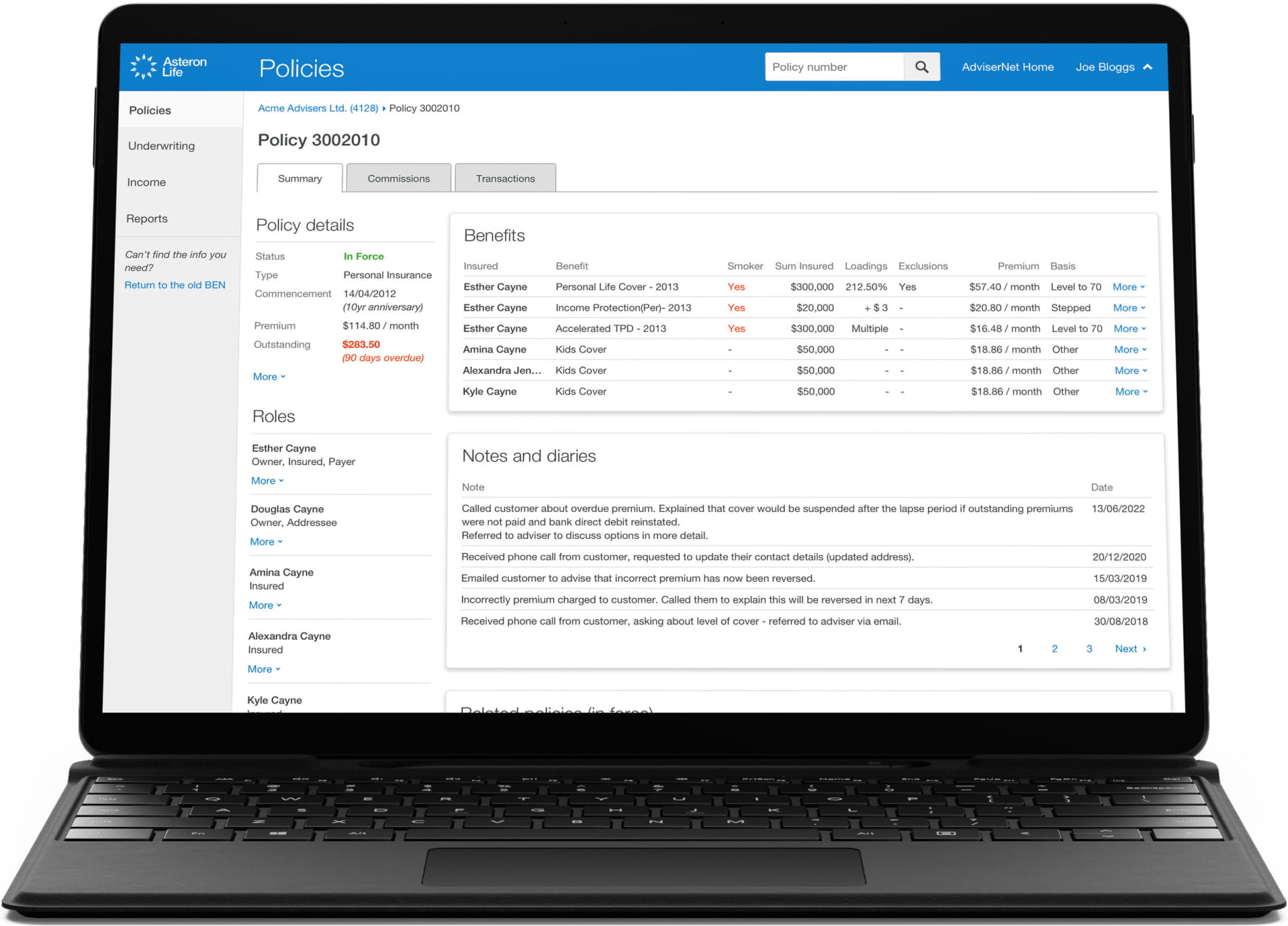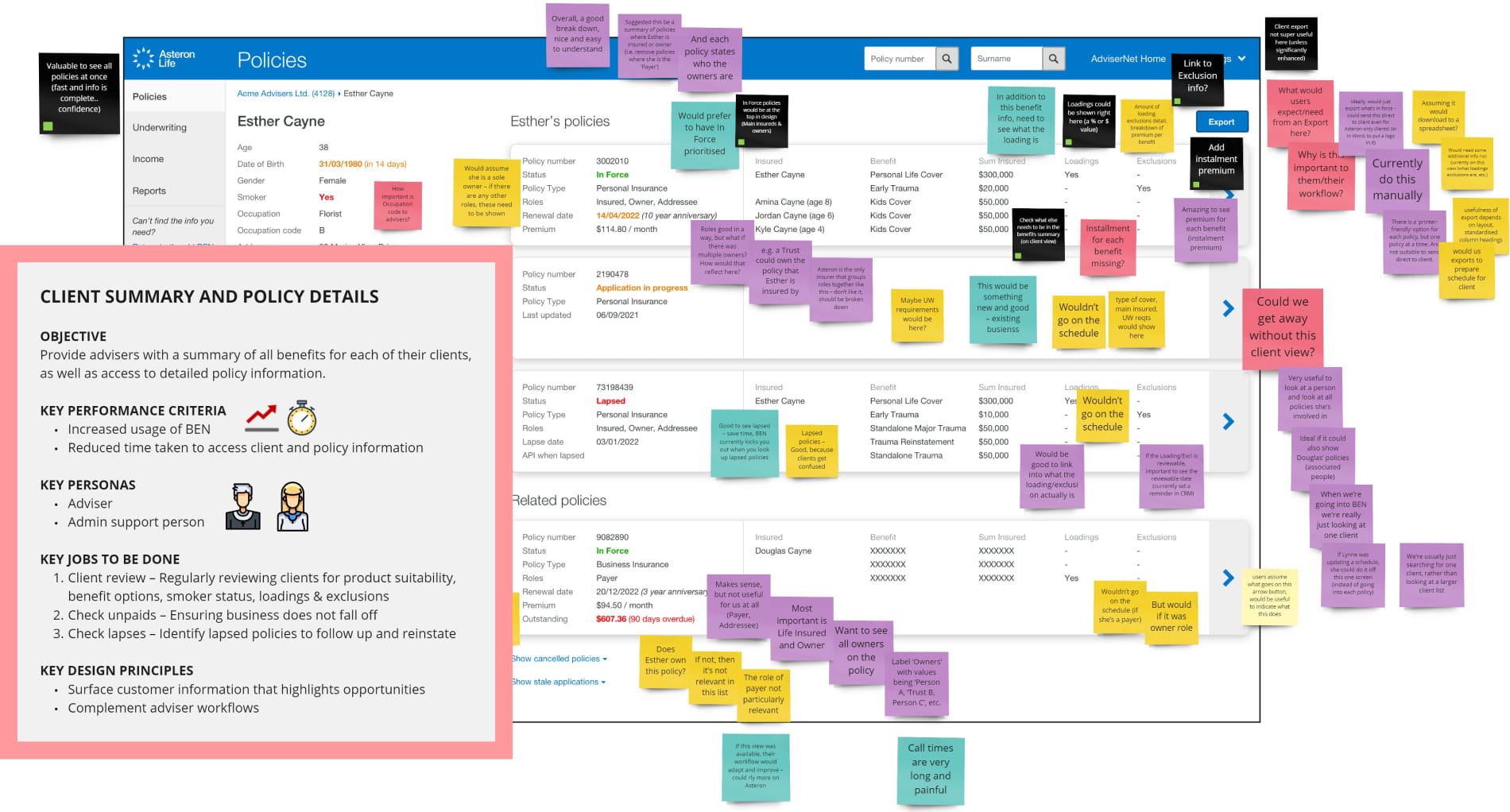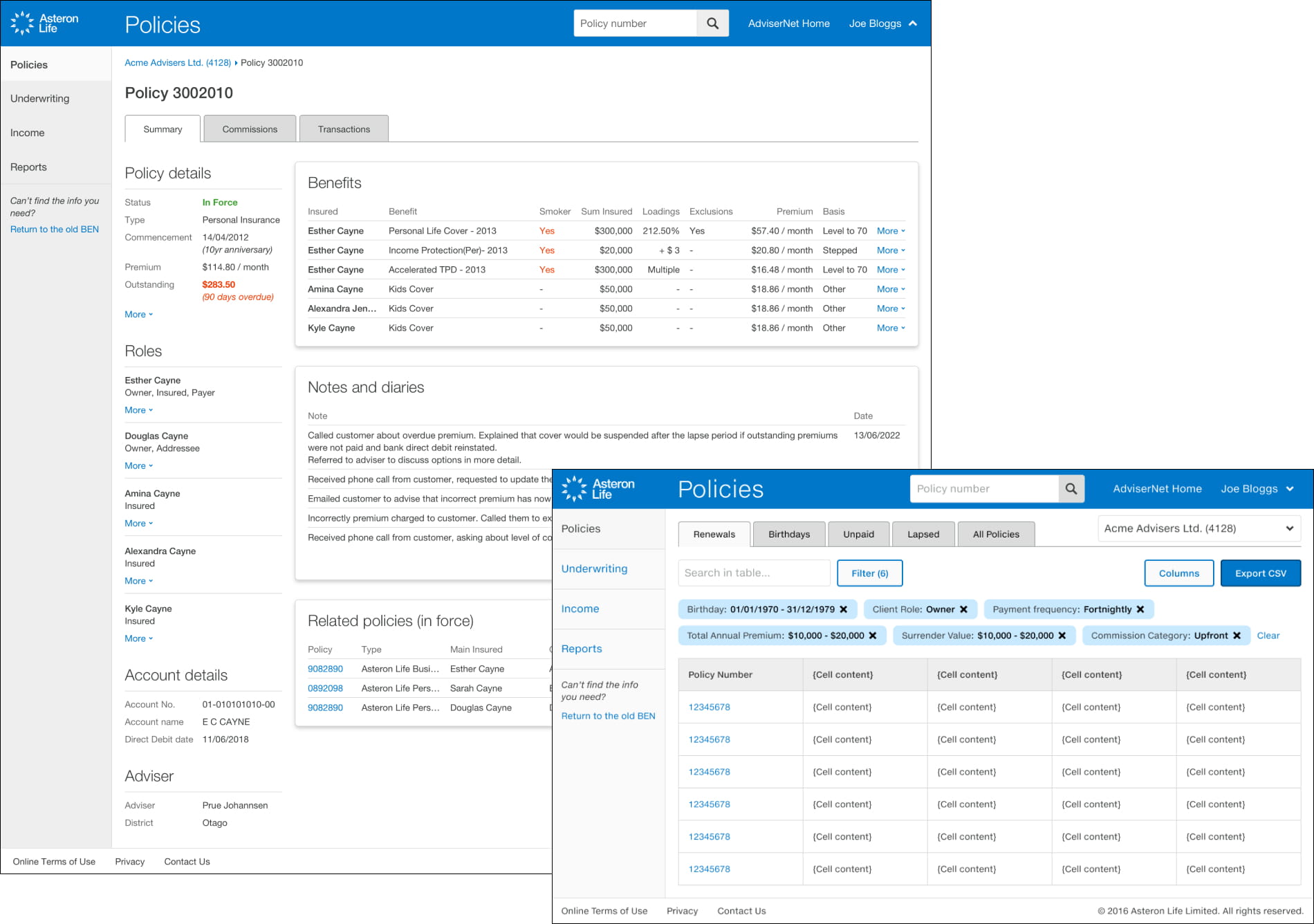Reinventing a legacy digital product to create more value for life insurance advisers.

I was the UX Lead on the project, conducting UX research and design, while leading a cross-functional team of product, engineering and UX contributors.
This project was to redesign a legacy platform life insurance advisers use to access customer and policy information. The UX team was invited to help improve the usability of the tool, which had become a well-known life adviser pain point.

I worked with a UX Researcher to analyse existing research studies, Voice of the Customer survey data, analytics data and conduct user interviews. We learned all about the wider experience of advisers outside the interactions with our brand.
With this insight, we then created design principles to help us focus on designing a product experience that would suit the greater context—complementing the different ways advisers run their businesses, supporting them in providing excellent service to their clients, and beating our competition on experience.
I was fervent in challenging the team’s assumptions about user value and driving for outcomes over outputs—something the organisation was still learning to put into practice. To complement our design principles, I led the team in creating a list of user ‘jobs-to-be-done’. This helped us reshape our feature set and requirements from being technology-centred to user-centred.
For a given feature I led 3 to 4 Lean UX ‘think-make-check’ cycles, in which we created hypotheses, prototyped a solution, and tested our thinking with users. This enabled us to very rapidly iterate from assumptive sketches to high-fidelity designs co-designed and validated by our users.

I am really proud of what our team achieved—although tasked with a narrow, technology-centric brief, we uncovered and delivered on insight to create a user-centric product. Of the several factors that led us there, I believe one of the most important ones was having a dedicated, multi-disciplinary team. We were able to rapidly design a feasible, viable, and desirable product experience that the organisation had confidence would deliver value.

“Awesome... wow! This makes my job easier. I like the look of this more than the new [competitor] system.”
“You needed a degree to be able to use the old platform. This new design is definitely looking like what we need.”
“It’s a thumbs-up from me!”